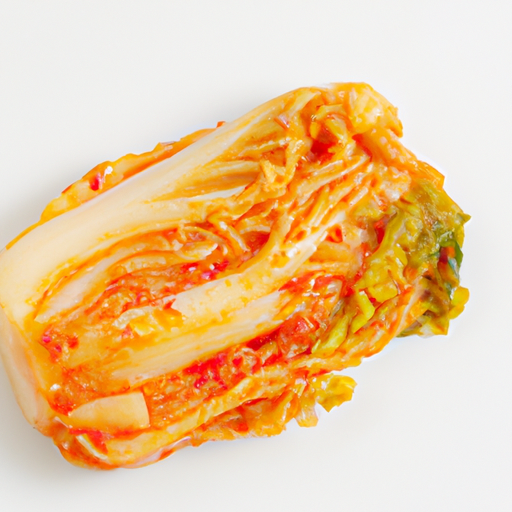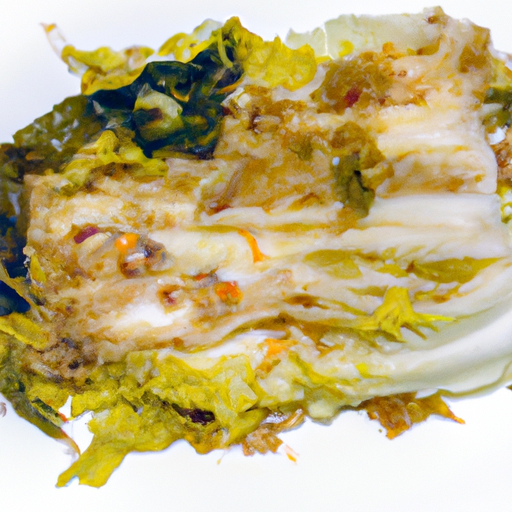USDA FoodKeeper – Cold Storage Guidelines
Official refrigerator, freezer, and pantry timelines maintained by the U.S. Department of Agriculture.
Visit USDA FoodKeeperBursting with flavor and health benefits, fermented Napa cabbage is a staple in Korean cuisine that adds a unique zing to any meal. When stored properly in the fridge, it boasts an impressive shelf life of up to 365 days, and even after expiration, it remains safe to enjoy for an additional six months!
30 most common foods with instant answers. Print it and stick it on your fridge—completely free! Want more? Upgrade to the complete guide with 70+ foods.
"According to USDA guidelines, homemade kimchi should be stored in the refrigerator at 40°F or below and consumed within one month for optimal quality and safety."


Fridge
4°C (40°F)
Keep in a sealed jar
365 days
Mold, extreme sourness beyond normal
Use in soups, rice dishes, or as a side
Sauerkraut, pickled vegetables
The expiration date on kimchi indicates the date until which it is expected to retain its quality and taste. After this date, the kimchi may not taste as fresh or flavorful, but it is still safe to consume as long as there are no signs of spoilage such as mold or off odors. Best quality refers to the peak flavor and texture of kimchi, which is usually within a few weeks to a couple of months after preparation, depending on personal preference for the level of fermentation.
To determine if Kimchi Fermented Napa Cabbage has spoiled, look for signs of mold growth, a slimy texture, or a sour and unpleasant odor. Fresh kimchi should have a crisp texture, vibrant color, and a tangy aroma. If you notice any of these indicators, it's best to discard the kimchi to avoid any potential foodborne illnesses.
Kimchi, being a fermented food, is generally safe to eat as the fermentation process creates an acidic environment that inhibits the growth of harmful bacteria. However, there is still a risk of contamination if proper hygiene and fermentation conditions are not maintained. It is essential to store kimchi properly to prevent the growth of pathogenic bacteria. People with compromised immune systems or pregnant women should be cautious about consuming unpasteurized kimchi.
To store kimchi properly, it is best to keep it in an airtight container in the refrigerator to slow down the fermentation process and maintain its flavor. Make sure the kimchi is fully submerged in its brine to prevent it from drying out. As kimchi continues to ferment, it may become more sour and develop stronger flavors. If you prefer a milder taste, consume it earlier in the fermentation process. Always use clean utensils to take kimchi out of the container to prevent contamination. Avoid storing kimchi at room temperature for extended periods as it can lead to over-fermentation and spoilage.
Kimchi is a traditional Korean side dish made of fermented vegetables, most commonly Napa cabbage and radish, seasoned with a mix of spices, garlic, ginger, and fish sauce or shrimp paste. It has been a staple in Korean cuisine for centuries and is deeply rooted in Korean culture. Kimchi-making is a communal activity in Korea, often done in large batches by families or communities during the fall harvest to preserve vegetables for the winter months. There are over 200 known varieties of kimchi in Korea, each with its unique flavor profile.
Temperature fluctuations can impact the quality and longevity of Kimchi Fermented Napa Cabbage. Ideally, store it in the fridge at a consistent temperature to maintain its freshness. Avoid leaving it out at room temperature for extended periods as this can accelerate spoilage.
It's best to avoid storing Kimchi Fermented Napa Cabbage near raw meats to prevent cross-contamination. Raw meat juices can carry harmful bacteria that may contaminate the kimchi. Keep them in separate compartments or use airtight containers to minimize the risk of foodborne illness.
The container you use to store Kimchi Fermented Napa Cabbage can affect its shelf life. Opt for airtight containers to maintain freshness and prevent exposure to air and moisture. Glass jars or food-grade plastic containers are ideal choices for preserving the kimchi's flavor and texture.
While the general shelf life of Kimchi Fermented Napa Cabbage is around 365 days when stored properly, different brands may have slight variations. Factors like ingredients, fermentation process, and preservatives can influence the kimchi's longevity. Always check the expiration date on the packaging for specific guidance.
Cooking Kimchi Fermented Napa Cabbage can alter its flavor and texture but generally does not impact its expiration date significantly. However, once kimchi is cooked, its probiotic benefits may be reduced. Consume cooked kimchi within a reasonable time frame to enjoy its flavors at their best.
Kimchi Fermented Napa Cabbage typically has a longer shelf life in colder temperatures, such as winter, due to slower microbial growth. In contrast, higher temperatures in summer can accelerate spoilage. Store kimchi in the fridge consistently regardless of the season to maintain its quality and safety.
When transporting Kimchi Fermented Napa Cabbage for an extended period, use a well-insulated cooler with ice packs to keep it at a safe temperature. Avoid leaving kimchi in a hot car as high temperatures can lead to rapid spoilage. Seal the container tightly to prevent leaks and maintain freshness.
30 most common foods with instant answers. Print it and stick it on your fridge—completely free! Want more? Upgrade to the complete guide with 70+ foods.
Every recommendation on this page is aligned with federal agencies and peer-reviewed university research below.
Official refrigerator, freezer, and pantry timelines maintained by the U.S. Department of Agriculture.
Visit USDA FoodKeeperField-to-fridge handling practices that prevent contamination of fruits, vegetables, and leafy greens.
Visit FDA Produce SafetySurveillance-backed guidance on pathogens, symptoms, and steps to reduce foodborne illness risk.
Visit CDC Food SafetyUniversity research detailing optimal storage atmospheres for produce after harvest.
Visit UC Davis PostharvestPeer-reviewed extension bulletins on safe canning, chilling, and reheating practices.
Visit Penn State ExtensionNeed deeper reading? Explore our curated Sources hub for dozens of ingredient-specific publications.
Scan your food directly and get instant safety info using our AI-powered camera feature.
We have recipes that can help you safely use kimchi fermented napa cabbage past its expiration date!
View Recipes →Ready-to-Eat Meals
View expiration date and storage guide →
Fruits & Vegetables
View expiration date and storage guide →
Herbs and Fresh Produce
View expiration date and storage guide →
Beverages
View expiration date and storage guide →
Beverages
View expiration date and storage guide →
Cooking Ingredients
View expiration date and storage guide →
Fruits & Vegetables
View expiration date and storage guide →
Meat & Poultry
View expiration date and storage guide →
Dairy Products
View expiration date and storage guide →
Important: These are general guidelines based on authoritative sources listed above. Always use your best judgment and when in doubt, throw it out. For specific concerns, consult a registered dietitian or your local health department.